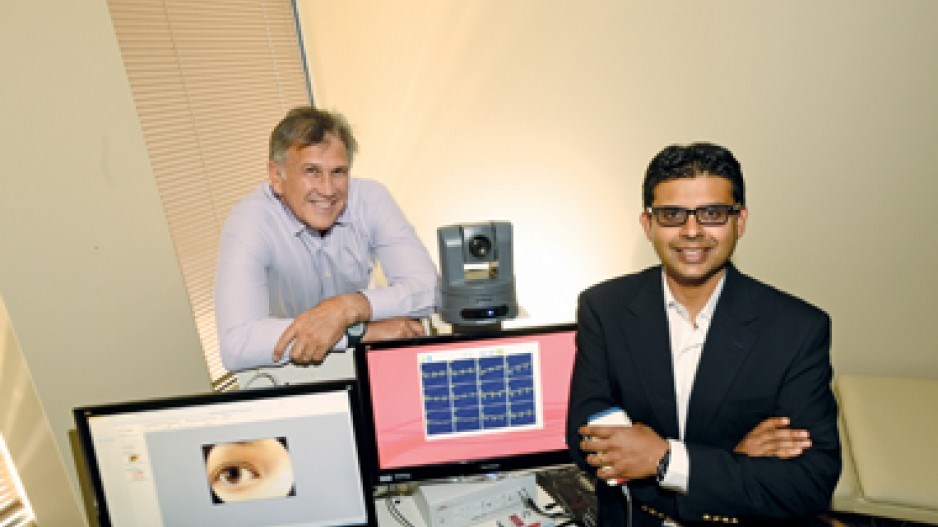When Howard Koseff listened to an asthma patient’s lungs recently, he was able to quickly diagnose the man’s condition, prescribe the proper medication and potentially help him avoid a series of trips to the emergency room.
That might sound like a routine diagnosis, but the patient was in Nelson – and Koseff was in Vancouver.
Koseff is one of a handful of physicians in B.C. now using remote diagnostics developed by Livecare, a new telemedicine company co-founded by Koseff and three other physicians, including False Creek Healthcare Centre founder Mark Godley, Livecare’s CEO.
Livecare is one of two Vancouver companies to launch new telemedicine services in B.C. in recent weeks.
Another is Medeo, which uses secure videoconferencing to connect patients with their physicians from the comfort of their homes – or even from work – using their laptops, tablets or smartphones (see “How I did it: Ryan Wilson” – BIV issue 1238; July 16-22).
Medeo conferencing can be used for visits that don’t require a physical exam or diagnostics – prescription refills, for example, or lab test followups.
Close to 100 B.C. doctors are now registered with Medeo, which has seen 20 to 150 new patients per day signing up to use the new service since launching at the beginning of June.
Like Medeo, Livecare uses secure videoconferencing to live-link a patient and doctor.
Unlike Medeo, which allows for video consultations from virtually anywhere, Livecare requires a visit to a clinic, but a physician does not need to be on site.
It allows for a range of diagnostic tools to be used by a technician to send the information to the physician or specialist over a secure connection.
A nurse or medical office assistant can use stethoscopes, thermometers, blood-pressure monitors and electrocardiographs connected to a special gateway to send a patient’s vital signs to a physician or specialist located in an urban centre or even another country.
Optical devices are used to examine a patient’s skin, ears, eyes or throat and can even record video, allowing the physician, operating remotely, to rewind and review the video and store it in the patient’s electronic medical record for future reference.
“We’re not just triaging,” said Amit Mathur, an optometrist and Livecare co-founder and COO. “We can diagnose.”
Godley believes Livecare will be able to dramatically reduce health-care costs, while opening up access to better medical care in remote communities that lack specialists or even primary care physicians.
“You’ve got this regional disparity where you’ve got patients who are in remote areas who don’t have the possibility of getting the same quality of care as somebody in downtown Vancouver,” Godley said.
In addition to stationary systems used in clinics, Livecare has developed small, mobile units – a digital version of the old doctor’s black bag – that can be taken anywhere in the world. All that is needed is a broadband Internet connection. One of the cost savings in telemedicine is the expense associated with patients in remote areas having to travel to urban centres.
“You’re becoming more efficient and effective by using telemedicine to reach patients remotely without having to travel all those distances,” said Elaine Dean, director of communications for Telus Health.
Livecare technology is now being used in Nelson, which has lost six family doctors in the span of a year, and in northern B.C.’s New Aiyansh, where it is being used to conduct eye exams remotely.
The Clover Care Clinic in Surrey and Pemberton Marine Medical Clinic in North Vancouver also offer after-hours clinics using Livecare telemedicine.
“You can keep doctors’ offices open much longer and you can use inexpensive, low-cost health-care workers at the point of care using telemedicine,” Godley said, “and you can harness the power of one doctor to many locations.”
Canadians keen to embrace telehealth
A recent PwC report, Making care mobile, concludes Canadians are keen to embrace telemedicine. Two-thirds of the Canadians surveyed said they would use some form of telehealth.
Technological advances – mobile devices, higher bandwidths, LTE, and streaming – are now making that possible.
Until recently, a major barrier to telemedicine in Canada was billing. But in the past 18 months, most provinces in Canada have introduced new billing codes to allow doctors to bill their provincial health ministries for telemedicine visits.
Medeo CEO Ryan Wilson said telemedicine could benefit the health-care system by reducing hospital visits.
“So many people end up in the emergency room because they haven’t had access to their physician. And every time someone ends up in an emergency room, that costs the province $900. Compared to a $40 telehealth visit, it’s much more cost effective for people to be seeing their own doctor than ending up in the hospital.”
IMS Research estimates the global telehealth market will be worth $6.28 billion by 2020. It’s a space that Telus (TSX:T) has developed as a separate business entity, investing $1 billion in telehealth through its Telus Health division.
Last year, it acquired Vancouver’s Wolf Medical Systems – which developed electronic medical records – for $30 million. Telus Health services include remote patient monitoring, where people can take their own blood glucose tests or blood pressure and upload the information to health-care providers.
Telus’ Pharma Space allows people to refill prescriptions online using their computers or smartphones.




